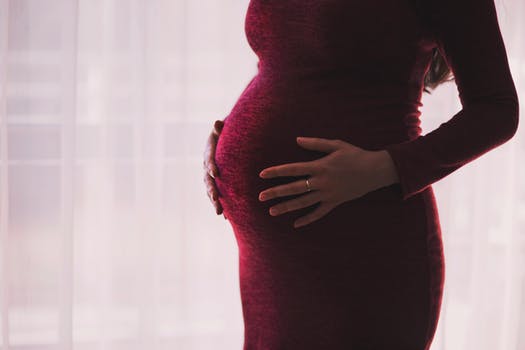Lower back and leg pain impact millions of people around the world. But, in truth, to put a number to the amount of suffering caused by back injuries is impossible, especially considering the number of conditions that can cause this often debilitating symptom. Even worse, back problems can lead to declining lifestyle choices, making it more difficult for people to lead active, healthy lives full of exercise and independence.
Signs of Spinal Stenosis

The knock-on effects of back problems are a significant contributor to the morbidity of aging populations. That is because decreased exercise links to decreases in muscle mass and an increased risk of cardiovascular problems and atherosclerosis.
Diagnosing the underlying causes of back and leg pain is often tricky since many different conditions could be to blame. For example, one of the significant causes of back and leg pain is a condition called spinal stenosis. However, many people suffering from back pain have yet to decide whether to talk to their doctor about spinal stenosis as a significant cause. Therefore, let’s explore some common signs to look out for if you believe you are suffering from this condition.
Lumbar Radiculopathy or Sciatica
One prevalent sign that spinal stenosis could be to blame for back pain is if the patient develops lumbar radiculopathy, also called sciatica, depending on the specifics of the symptomatology. Lumbar radiculopathy is when the nerve roots in the lower back are compressed or pressured. This condition is known as sciatica when specific compression of the sciatic nerve occurs.
Several different factors can contribute to causing lumbar radiculopathy and the compression of nerves in the back. These causes include damage to a back disk that presses on nearby nerves. An unstable spine can also cause lumbar radiculopathy when vertebrae slip forward and press on the nerve root.
However, the most relevant for this discussion is that spinal stenosis is a common cause of lumbar radiculopathy and sciatica. Spinal stenosis refers to back and spine degeneration or wear and tear due to overuse and aging.
Spinal stenosis is characterized by narrowing the small openings in your spinal cord, known as the foramen, and narrowing the spinal cord or the central canal, as a common reference. In addition, the narrowed openings between vertebrae in the back press on the nerve roots that exit the spinal canal.
Weight loss programs, prescription medications, and steroid injections are all common treatments for sciatica. Diet and physical therapy can also be effective treatments for some patients, especially when combined with the responsible use of specific nutraceuticals. According to Dr. Brandon Claflin, when it comes to getting treatment for any back pain, addressing the root cause of the pain is essential, which is why it is vital to work with a qualified physician with relevant experience.
Gait Problems or a Foot Drop
Gait problems are also a common sign of spinal stenosis. That’s because spinal stenosis can affect a patient’s walking ability in several ways.
In the case of lumbar spinal stenosis, which primarily impacts the lower back, problems walking can emerge due to a foot drop. The term foot drop refers to when the compression of the roots of the L4 and L5 nerves in the lower back cause motor weakness in patients’ feet. As a result, it leads to difficulty lifting the foot, which can significantly impede walking. In addition, foot drops can commonly lead to patients dragging their feet when walking because of the compression of the nerves, which can make stumbling and falling more common.
It may seem counterintuitive to some, but falls are one of the most lethal events for the elderly, especially because they can lead to debilitating hip or joint injuries that can prevent patients from leading active lifestyles. In addition, the inability to exercise regularly can dramatically accelerate aging. As a result, even if the fall itself isn’t lethal, the impacts of the fall can be over time.
Due to the dangers associated with falls in older patients, diagnosing spinal stenosis early by recognizing signs like gait problems and foot drops could significantly reduce the potential morbidity from falls for some patients.
Neurogenic Claudication
Another common sign you should look out for when it comes to spinal stenosis is neurogenic claudication. Nerve compression can cause neurogenic claudication. It is characterized by persistent pain or numbness in the legs when standing. This pain or numbness often increases when walking or bending the spine backward.
Numbness or pain when performing activities or movements while upright is also common, and often this pain or numbness will diminish with rest. An essential indicator of neurogenic claudication is that the numbness or pain patients experience resolves or reduces in severity when the patient leans forward. That can also include leaning on a walker or shopping cart, leaning forward while squatting or performing everyday activities like gardening.
It is important to note that neurogenic claudication is distinct from vascular claudication. However, the symptomatology of both conditions is similar. Vascular claudication is caused by decreased muscle blood flow, especially during exercise or walking over variable distances.
As a result, a qualified physician will have to diagnose whether symptoms like pain or numbness when walking or leaning forward contribute to vascular or neurogenic claudication. If neurogenic claudication is the cause, that could be a sign the patient is suffering from spinal stenosis.
Loss of Fine Motor Skills and Other Signs of Spinal Stenosis
It is common for patients suffering from spinal stenosis to experience a loss or reduction in fine motor skills. Acts as simple as buttoning a shirt, writing, or holding a pen can become difficult due to spinal stenosis.
Because other conditions can also impair fine motor skills, a doctor must confirm that spinal stenosis is the root cause and diagnose it in the patient. This evaluation is vital since spinal stenosis and its resulting symptoms can worsen if untreated.
In rare cases, spinal stenosis can cause disruptions in the bowel function of patients, along with extreme weakness or numbness in the inner thighs or legs. These symptoms, although rarer, can also be more severe since they could indicate conditions such as cauda equina syndrome, which could eventually lead to a loss of function in the patient’s legs.
To sum up, spinal stenosis can be tricky to diagnose since the symptoms it creates mirror other conditions. However, identifying common signs will help determine whether spinal stenosis is worth discussing with your doctor.





